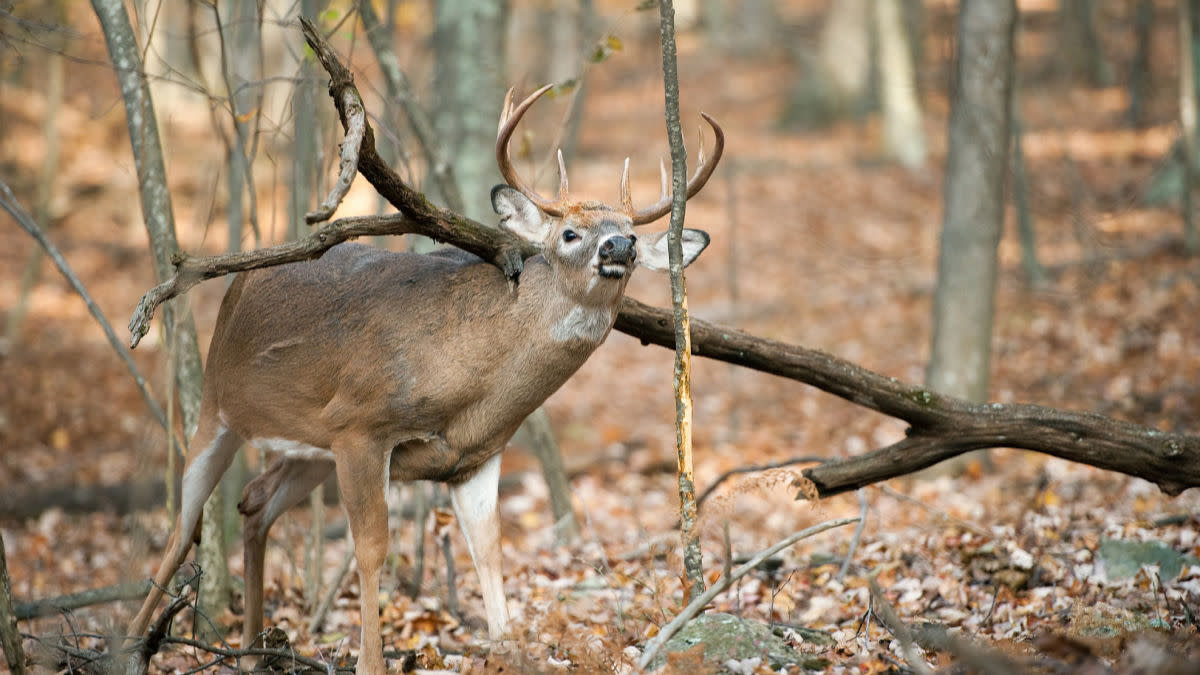
When it comes to deer sign, it’s what we can see that gets us most excited. A 6-inch-thick cedar shredded from serious tine-work along a rub line will always catch our eyes. Our focus on the aesthetics of sign is, of course, due to our olfactory capabilities being orders of magnitude poorer than whitetails’. This means we are missing out on the overall purpose of buck sign.
Communication is the name of the deer sign game, which is why rubs are more than just a visual marker and are superior to scrapes this time of year. When bucks rub, they aren’t just practice fighting or setting up a traffic sign, they’re using their tubular apocrine sudoriferous glands to leave a specific odor on trees. This explains why a buck often stops to sniff his handiwork after shredding some wood.
It’s believed that the scent on rubs is meant to intimidate subordinate deer, but it’s also been shown that multiple bucks will rub the same tree. Like community scrapes, deer will use community rubs. And while it’s up for speculation on our part, most hunters believe that local whitetails are using rubs to keep tabs on who’s around.
Does any of this matter to the rut hunter? It sure does. Despite the reality that a hit list buck could end up 3 miles away during the rut, he’s far more likely to cruise specific routes through his home range. He may concentrate on the east side of his territory one day and the west the next, but he’s going to spend most of his time in the areas he knows well.
Those same core regions of his home range should be covered in his rubs—the very same rubs he has been using to communicate to the rest of the herd. Those rubs, of which some bucks produce as many as a couple hundred each fall, can clue you into the areas he’s likely to visit at least every few days during his rut travels. The catch is that you’ve got to be able to identify the rubs that help you as a hunter, and the ones that don’t.
An easy example of the latter are rubs you might find on the edge of a picked soybean fields. Sure, if you’ve got a farm to yourself and lightly pressured deer to hunt, that might be good enough to set up on. If you’re hunting public land or pressured private dirt, you’ll want to keep looking. In this scenario, rubs in the cover matter because they were far more likely to have been made in daylight. But one rub doesn’t make for a good hunting area.
Rub lines are better, not only because they’ll show a concentration of sign, but because they’ll give you a clear direction that your target buck likes to travel. A rub line read right can show you where your buck is traveling in the morning and evening, depending on where food is located.
The ideal scenario is finding a cluster of rubs with no discernible pattern that are located in a patch of thick cover. Whether it’s his bedroom or a staging area, this type of sign means you’re in a spot that he’s comfortable (or where multiple bucks are spending time).
An acre or two that is loaded with rubs lets you know that you’re clued into the core range of the rub-maker, which is an excellent ambush location for the rut. If you want to further increase your odds of a November encounter, identify the closest pinch-point or funnel you can find. That way you’ll be next door to the best sign while sitting over a natural movement producing terrain feature, which is a great strategy for November.
Feature image via Matt Hansen.







Conversation